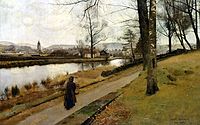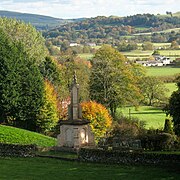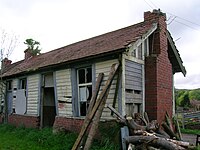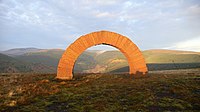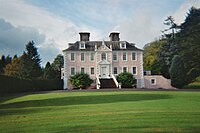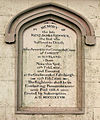Moniaive
| Moniaive Scots: Minnyhive | |
| Dumfriesshire | |
|---|---|
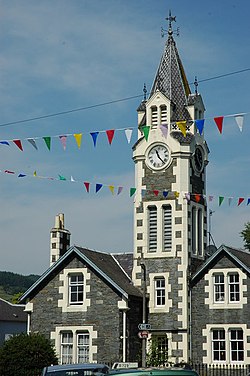 The Clock Tower, Moniaive | |
| Location | |
| Grid reference: | NX778909 |
| Location: | 55°11’49"N, 3°55’16"W |
| Data | |
| Population: | 520 |
| Post town: | Thornhill |
| Postcode: | DG3 |
| Dialling code: | 01848 |
| Local Government | |
| Council: | Dumfries and Galloway |
| Parliamentary constituency: |
Dumfries and Galloway |
Moniaive is a village in Parish of Glencairn, in Dumfriesshire.
The name of the village appears to be from Galloway Gaelic; in modern Gaelic Am Moine Naomh means 'The Holy Moor'.
Contents
History
Moniaive has existed as a village as far back as the 10th century.
On 4 July 1636 King Charles I granted a charter in favour of William, Earl of Dumfries, making Moniaive a 'free Burgh of Barony'. With this charter came the rights to set up a market cross and tolbooth, to hold a weekly market on Tuesday and two annual fairs each of three days duration. Midsummer Fair was from 16 June and Michaelmas Fair on the last day of September.
Covenanting
In the 17th century, Moniaive became the refuge for the Covenanters, a group of Presbyterian nonconformists who rebelled at the Episcopalian form then enforced in the Church of Scotland. A monument stands by the Ayr Road to James Renwick, a Covenanter leader born in Moniaive and later executed in Edinburgh.
James Paterson
The artist James Paterson, a founder member of an artistic movement known as 'The Glasgow Boys', settled in Moniaive in 1884 and stayed for 22 years. He painted many local scenes including "The Last Turning" - a view of a woman approaching the village on the lane on the western side of the old millpond (now drained) in the Dalwhat Valley - now displayed in the Kelvingrove Art Gallery and Museum. A James Paterson museum existed within the village until 2005 displaying photographs and memorabilia from the collection of his granddaughter, Anne Paterson-Wallace.
Cairn Valley Light Railway
The Cairn Valley Light Railway was opened from Dumfries in 1905 as a subsidiary company of the Glasgow and South Western Railway. Plans initially had involved developing Moniaive into a resort due to the countryside being very scenic and peaceful. Passenger services were suspended as a wartime economy on 3 May 1943 and to all traffic on 4 August 1947.
Local economy
The local economy is dominated by sheep and some cattle farming as well as forestry. The area has a large self-employed community including writers, artists, graphic designers, historical interpretation services, clothing designers, aromatherapists, stained glass workers, a wine importing business, a chocolatier, computer repairs, garden and landscaping services, plant nursery, and child care. There is a large general store including a post office counter, a garage, an organic cafe, a chocolatier, several artist studios, a primary school, a guest house and two hotels with bars and restaurants, one with accommodation, and two village halls.
Media
A bi-monthly newspaper, called the Glencairn Gazette, is produced by volunteers and distributed free to residents.
Festivals
The village is home to a number of festivals that are held every year including; the Moniaive Folk Festival, the Moniaive Michaelmas Bluegrass Festival, the Moniaive Horse Show, the Moniaive and District Arts Association annual exhibition, the Glencairn and Tynron Amateur Cottagers and Gardeners Horticultural Society show and the Moniaive Gala.
About the village
Cairnhead Community Forest is a charity formed in 1998 to encourage and enable community participation through a working partnership with its owner Forestry Commission Scotland.
Three arches by artist Andy Goldsworthy stand around Cairnhead on Bail Hill, Benbrack and Colt Hill. Each arch stands 13 feet high, with a span of 23 feet and consists of 31 blocks of hand-dressed red sandstone weighing approximately 27 tons.
Miscellany
- Moniaive was named best overall small village in the Nithsdale in Bloom competition five times in a row, from 2006-2011.[1]
- The village streetscape was featured in the 2002 Peter Mullan film The Magdalene Sisters.
- In 2004, The Times described the village as one of the 'coolest' in Britain.
Gallery
Outside links
| ("Wikimedia Commons" has material about Moniaive) |
- Moniaive Village
- The Striding Arches
- The Moniaive Folk Festival
- The Moniaive Michaelmas Bluegrass Festival
